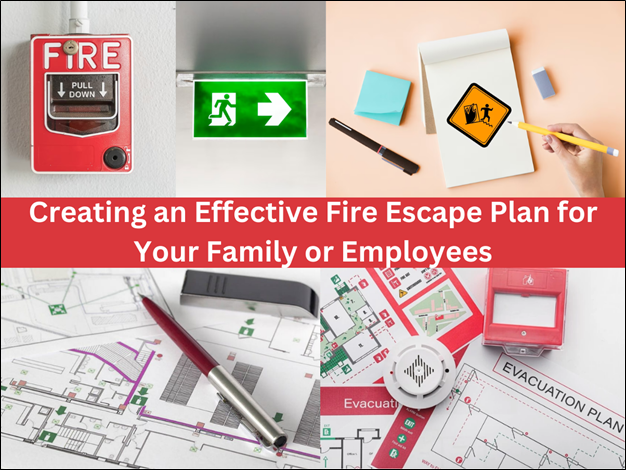

Introduction: In the event of a fire emergency, having a well-prepared fire escape plan can mean the difference between life and death. Whether you’re considering the safety of your family at home or the well-being of your employees in the workplace, creating an effective fire escape plan is crucial. At Full Range Fire Safety, we will discuss the importance of having a fire escape plan and provide step-by-step guidelines on how to create one that ensures the safety of your loved ones or employees.
1. Assess the Building and Identify Exits: Begin by assessing the layout of your building. Identify all possible exits, including doors, windows, stairwells, and emergency exits. Take note of any potential obstacles or hazards that may impede escape routes. Understanding the building’s layout will help you plan the most efficient escape routes.
2. Develop a Communication Strategy:

Establish a communication strategy to ensure that everyone is aware of the fire escape plan. Instruct family members or employees on how to recognize the sound of the fire alarm and what actions to take upon hearing it. Designate a meeting point outside the building where everyone should gather after evacuating. Communication is vital during an emergency, so consider implementing a method such as a phone tree or a mass notification system for larger organizations.
3. Assign Responsibilities: Allocate responsibilities to family members or employees to ensure a smooth evacuation process. Designate a leader who will take charge during the fire emergency and ensure that everyone follows the escape plan. Assign someone to assist children, elderly individuals, or those with mobility challenges. Distribute tasks such as calling emergency services or grabbing essential items like first aid kits or fire extinguishers.
4. Educate and Train: Provide comprehensive training to family members or employees on fire safety services procedures and the specific steps of the escape plan. Conduct regular fire drills to practice the evacuation process and reinforce the importance of following the plan. Training should cover techniques for staying low to avoid smoke inhalation, testing doorknobs for heat, and demonstrating how to use fire extinguishers if safe to do so.
5. Plan for Different Scenarios: Consider various fire scenarios that may occur, such as fires blocking certain exits or stairways. Develop alternative escape routes for each scenario and ensure that everyone is aware of them. Prepare for the possibility of having to evacuate from upper floors by providing emergency escape ladders or identifying nearby safe areas to wait for rescue.
6. Maintain and Update the Plan: Regularly review and update your fire escape plan to account for any changes in the building layout, personnel, or potential hazards. Test smoke alarms and fire extinguishers regularly to ensure they are in working condition. Periodically remind family members or employees about the fire escape plan and conduct refresher training sessions.
Conclusion: Creating an effective fire escape plan is a proactive and essential step toward ensuring the safety of your family or employees in the event of a fire emergency. By assessing the building, developing a communication strategy, assigning responsibilities, educating and training individuals, planning for different scenarios, and maintaining the plan, you can be prepared to respond quickly and efficiently during a fire incident. Remember, regular practice and communication are key to ensuring the successful execution of the fire escape plan. Prioritize the safety of your loved ones or employees by implementing a well-prepared fire escape plan today.